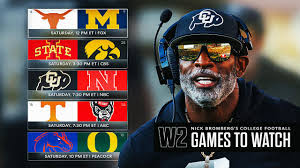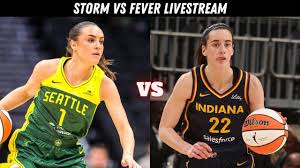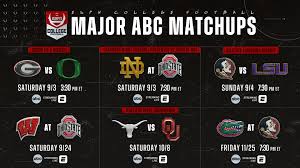
Introduction
College football holds a unique place in American sports culture. Unlike professional football, which is driven primarily by commercial enterprise and national viewership, college football thrives on regional pride, tradition, pageantry, and the raw passion of students, alumni, and local communities. On Saturdays in the fall, stadiums fill with tens of thousands—sometimes over 100,000 fans—while millions tune in across the country to follow their teams. The sport is more than just a game; it is a cultural phenomenon that blends athletic excellence with tradition, controversy, and an ever-changing landscape shaped by media rights, conference realignments, and debates about amateurism.
In this article, we will take an in-depth look at college football today: its structure, traditions, evolution, key players, current issues, the impact of NIL (Name, Image, Likeness), the role of conferences, the College Football Playoff, rivalries, and its future in American sports.
1. The Landscape of College Football
1.1 The Governing Body and Structure
College football is governed by the National Collegiate Athletic Association (NCAA), which oversees different levels of play:
- FBS (Football Bowl Subdivision) – The highest level, where schools compete for the College Football Playoff and major bowl games.
- FCS (Football Championship Subdivision) – A competitive tier where schools compete in a playoff system culminating in a national championship.
- Division II and Division III – Lower tiers that emphasize student participation and academics, with limited or no athletic scholarships.
At the FBS level, schools are grouped into conferences, each with its own rules, traditions, and revenue-sharing models. These conferences (SEC, Big Ten, ACC, Big 12, Pac-12, etc.) wield enormous influence in shaping the sport.
1.2 The Importance of Conferences
Conferences in college football are not merely scheduling tools; they represent cultural and geographic identities. The SEC is synonymous with southern pride and dominance, the Big Ten reflects Midwestern values and powerhouse programs, while the Pac-12 (recently fractured) symbolized West Coast tradition.
However, in recent years, conference realignment has shaken the sport. Schools like Texas and Oklahoma have announced moves to the SEC, while USC and UCLA joined the Big Ten, blurring geographic lines in pursuit of television revenue. This shift highlights how media rights and money increasingly dictate the future of the sport.
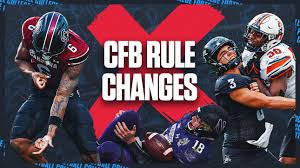
2. The Pageantry and Culture of College Football
2.1 Traditions and Rituals
Few sports match the pageantry of college football. From marching bands to fight songs, from the Clemson Tigers running down the hill at Memorial Stadium to the Ohio State Buckeyes’ “Script Ohio,” rituals define the experience. Tailgating culture is also central—fans gather hours before games to cook, share drinks, and bond in anticipation of kickoff.
2.2 Rivalries
College football rivalries are legendary and often stretch back over a century. Some of the most famous include:
- Michigan vs. Ohio State – Known as The Game, it is arguably the sport’s most intense rivalry.
- Alabama vs. Auburn – The Iron Bowl, where the entire state of Alabama is divided.
- Texas vs. Oklahoma – The Red River Showdown played annually in Dallas.
- Army vs. Navy – A rivalry steeped in military tradition and respect.
Rivalries often transcend records; a win in the rivalry game can salvage an otherwise disappointing season.
2.3 The Role of Fans
Unlike professional sports, where franchises move cities and loyalties are fluid, college football fandom is deeply tied to identity. Alumni, students, and regional communities treat their teams as extensions of themselves. Stadiums like Michigan’s “Big House,” Penn State’s “White Out,” and LSU’s “Death Valley” are more than arenas—they are cultural landmarks.
3. The College Football Playoff (CFP)
3.1 The Old Bowl System
For much of its history, college football crowned champions through polls and bowl games. This system often led to controversy, with multiple teams claiming national titles.
3.2 The BCS Era
From 1998 to 2013, the Bowl Championship Series (BCS) attempted to match the top two teams in a title game using polls and computer rankings. While it reduced controversy, debates about fairness and exclusion persisted.
3.3 The Playoff Era
In 2014, the College Football Playoff (CFP) was introduced, featuring a four-team bracket chosen by a selection committee. While the CFP has delivered dramatic games, critics argue that four teams are too few, excluding worthy contenders.
Starting in 2024, the CFP will expand to 12 teams, giving more programs access to the championship and creating more excitement for fans. This change marks one of the most significant evolutions in the sport’s modern era.
4. The Players and NIL Revolution
4.1 Amateurism and Its Controversies
For decades, college athletes were considered amateurs, forbidden from receiving payment beyond scholarships. Critics argued this was exploitative, given the billions generated by the sport.
4.2 Name, Image, and Likeness (NIL)
In 2021, the NCAA allowed athletes to profit from their name, image, and likeness (NIL). This opened doors for endorsement deals, social media promotions, and business ventures. Players like Alabama’s Bryce Young and LSU’s Angel Reese (in basketball) quickly signed lucrative deals.
4.3 The Impact of NIL
NIL has transformed recruiting and competition. Top athletes can now choose programs not only for athletic opportunity but also for financial potential. While some celebrate this as fair compensation, others worry it could create an uneven playing field favoring schools with wealthy boosters.
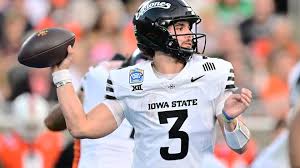
5. Media, Money, and the Business of College Football
5.1 Television Contracts
College football’s popularity is tied closely to television. Networks like ESPN, Fox, and CBS pay billions for broadcasting rights. These deals fund athletic departments, pay coaches’ massive salaries, and fuel conference realignments.
5.2 The Streaming Era
With streaming platforms entering the market, the future of broadcasting may further reshape the sport. Younger fans are consuming highlights on TikTok and YouTube, while streaming services fight for live game rights.
5.3 Coaching Salaries and Economics
Head coaches at top programs often earn $5–10 million annually, rivaling NFL coaches. This economic imbalance raises ethical questions, as the athletes themselves—until NIL—saw none of the direct profits.
6. The On-Field Product: Styles of Play
6.1 Evolution of Offense
College football today is known for innovation. Spread offenses, run-pass options (RPOs), and uptempo schemes dominate, influencing even the NFL. Coaches like Chip Kelly, Urban Meyer, and Lincoln Riley brought creativity that reshaped the game.
6.2 Defense and Adaptation
Defenses have adapted with hybrid linebackers and positionless schemes designed to counter explosive offenses. Programs like Georgia and Alabama have shown that dominant defenses still win championships.
6.3 Special Teams and Hidden Yardage
Special teams play remains critical, with iconic moments—like Auburn’s Kick Six in 2013—reminding fans that games can be won or lost in the kicking game.
7. Social Issues and College Football
7.1 Diversity and Representation
College football has provided opportunities for players of diverse backgrounds, though coaching diversity remains a challenge. Calls for more representation among head coaches and athletic directors continue.
7.2 Protests and Advocacy
Players have used their platforms to advocate for social issues. During the 2020 season, several teams boycotted practices or wore messages supporting racial justice, reflecting broader social movements.
7.3 Health and Safety
Concerns about concussions and long-term health have led to rule changes, such as targeting penalties and limits on contact in practice. Still, the balance between safety and physicality remains an ongoing debate.
8. The Global Reach of College Football
While college football is uniquely American, its reach is growing. International players, such as Australian punters, have carved out roles. Games have even been played abroad, including Ireland and Japan. As media access expands, interest in U.S. college football continues to spread worldwide.
9. The Future of College Football
9.1 Expansion and Realignment
The next decade will likely bring even more conference reshuffling, with super-conferences dominating the landscape.
9.2 Technology and Analytics
Data analytics, wearable tech, and advanced scouting tools will continue to influence strategy.
9.3 The Student-Athlete Balance
As NIL evolves, the line between college and professional football may blur further. The challenge will be preserving tradition while embracing modernization.
Conclusion
College football today stands at a fascinating crossroads. It is both steeped in tradition and evolving rapidly under the pressures of money, media, and social change. On one hand, the pageantry of marching bands, packed stadiums, and century-old rivalries continues to define Saturdays in the fall. On the other, NIL deals, expanded playoffs, and shifting conferences signal a new era where the sport is more commercialized than ever.
Despite its challenges, college football remains a beloved institution, a bridge between past and future, community and commerce, sport and spectacle. Whether you are an alumnus cheering for your alma mater, a student experiencing game day for the first time, or a fan watching from home, college football continues to capture hearts and imaginations in a way few sports can.
